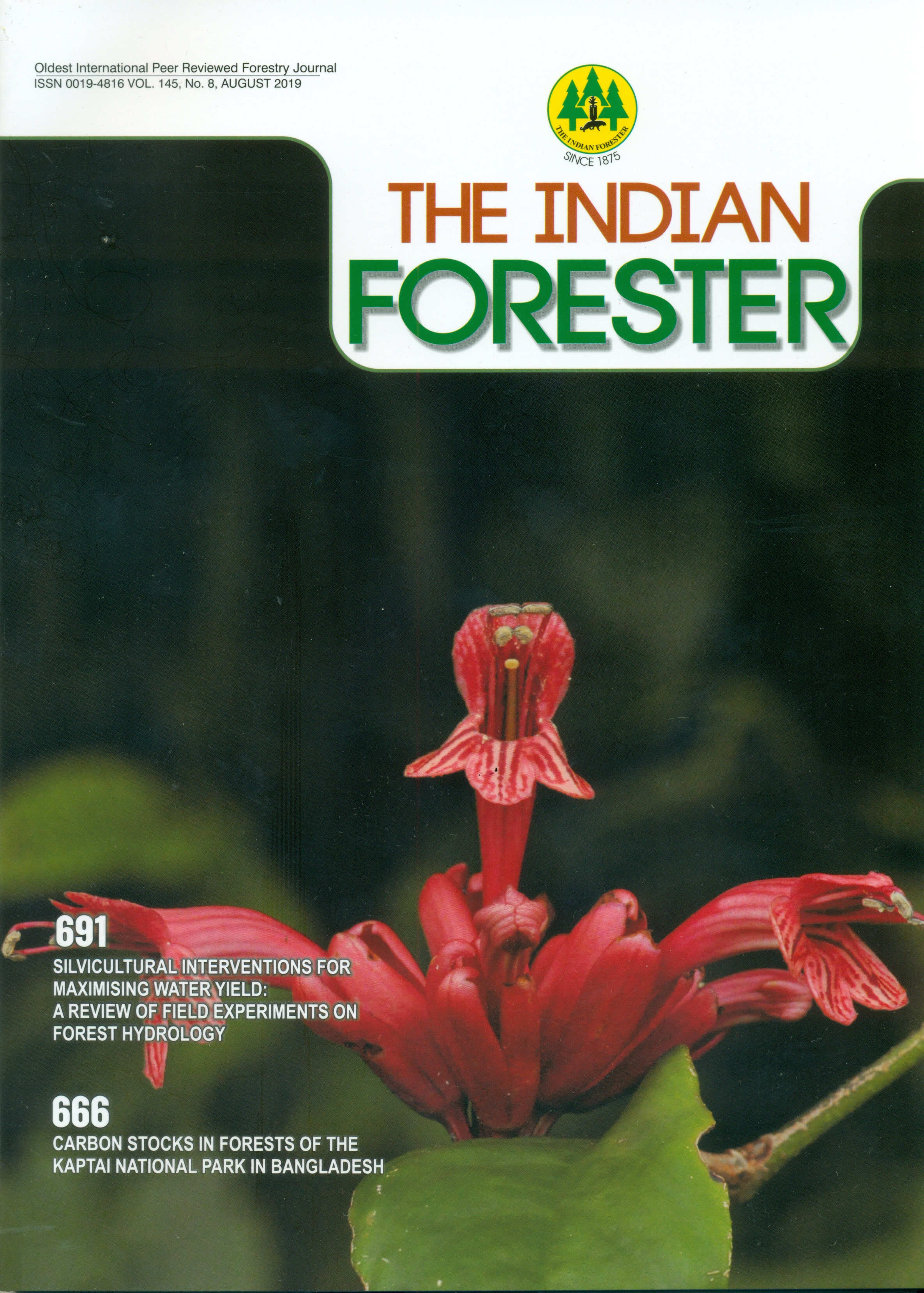Understanding the Differential Roles of Major Causal Factors in the 2017 Delhi Smog through an Analysis of Satellite, Meteorological and Pollution Data
DOI:
https://doi.org/10.36808/if/2019/v145i8/147106Keywords:
2017 Delhi Smog, Air Pollution, Burning of Agricultural Residues.Abstract
The paper describes an analysis of publicly available satellite, meteorological and pollution data to investigate the differential roles of major causal factors in the 2017 Delhi smog. The investigation revealed that the prevailing weather conditions and the burning of crackers on Diwali and agricultural (paddy) residues on fields may have had significant roles in creating and continuing the smog, when compared to other factors such as automobiles and industries which are mainly responsible for worsening the smog situation. Suggestions for the present and future management of smogs are also provided.References
Barman S., Singh R., Negi M. and Bhargava S. (2008). Ambient air quality of Lucknow City (India) during use of fireworks on Diwali Festival. Environmental monitoring and assessment, 137(1-3): 495-504.
Davis D.L. (2002). A look back at the London smog of 1952 and the half century since. Environmental health perspectives, 110(12): A734.
EPA (2011). 2011 National Emissions Inventory (NEI) Data. 2017, from https://www.epa.gov/air-emissions-inventories/2011-national-emissions-inventory-nei-data.
George M., Kaur J. and Sharma A. (2013). Delhi smog 2012: cause and concerns. J. Pollution Effects & Control: 1-6.
Guoliang C., Zhang X., Sunling G. and Zheng F. (2008). Investigation on emission factors of particulate matter and gaseous pollutants from crop residue burning. J. Environmental Sciences, 20(1): 50-55.
Guttikunda S.K. and Calori G. (2013). A GIS based emissions inventory at 1 km × 1 km spatial resolution for air pollution analysis in Delhi, India. Atmospheric Environment, 67: 101-111.
Hodan W. and Barnard W.R. (2004). Evaluating the contribution of PM2. 5 precursor gases and re-entrained road emissions to mobile source PM2. 5 particulate matter emissions. MACTEC Federal Programs, Research Triangle Park, NC.
Jenkins B., Turn S., Williams R., Goronea M. and Abd-el Fattah H. (1996). Atmospheric pollutant emission factors from open burning of agricultural and forest biomass by wind tunnel simulations. Volume 1. Final report, California Univ., Davis, CA (United States).
Kajino M., Ueda H., Satsumabayashi H. and An J. (2004). Impacts of the eruption of Miyakejima Volcano on air quality over far east Asia. Journal of Geophysical Research: Atmospheres, 109(D21).
Kumar P., Kumar S. and Joshi L. (2015). Socioeconomic and environmental implications of agricultural residue burning: a case study of Punjab, India, Springer.
Lee D.S. and Atkins D. (1994). Atmospheric ammonia emissions from agricultural waste combustion. Geophysical Research Letters, 21(4): 281-284.
Lemieux P.M., Lutes C.C. and Santoianni D.A. (2004). Emissions of organic air toxics from open burning: a comprehensive review. Progress in energy and combustion science, 30(1): 1-32.
Mohan M. and Kandya A. (2007). An analysis of the annual and seasonal trends of air quality index of Delhi.
Environmental monitoring and assessment, 131(1): 267-277.
Sapek A. (2013). Ammonia Emissions from Non-Agricultural Sources. Polish J. Environmental Studies, 22(1).
Shepherd A. (2017). Delhi Fights for air under toxic smog, British Medical Journal Publishing Group.
Taylor E. and McMillan A. (2013). Air Quality Management: Canadian Perspectives on a Global Issue, Springer Netherlands.
Webb J., Hutchings N., Amon B., Nielsen O.-K., Phillips R. and Dämmgen U. (2013). NFR: 3. F Field burning of agricultural residues.
Wu Y., Gu B., Erisman J.W., Reis S., Fang Y., Lu X. and Zhang X. (2016). PM 2.5 pollution is substantially affected by ammonia emissions in China. Environmental Pollution, 218: 86-94.
Yadav S. and Rawal G. (2016). The great Delhi smog. Indian Journal of Immunology and Respiratory Medicine, 1(4): 78-79.
Downloads
Downloads
Published
How to Cite
Issue
Section
License
Unless otherwise stated, copyright or similar rights in all materials presented on the site, including graphical images, are owned by Indian Forester.





